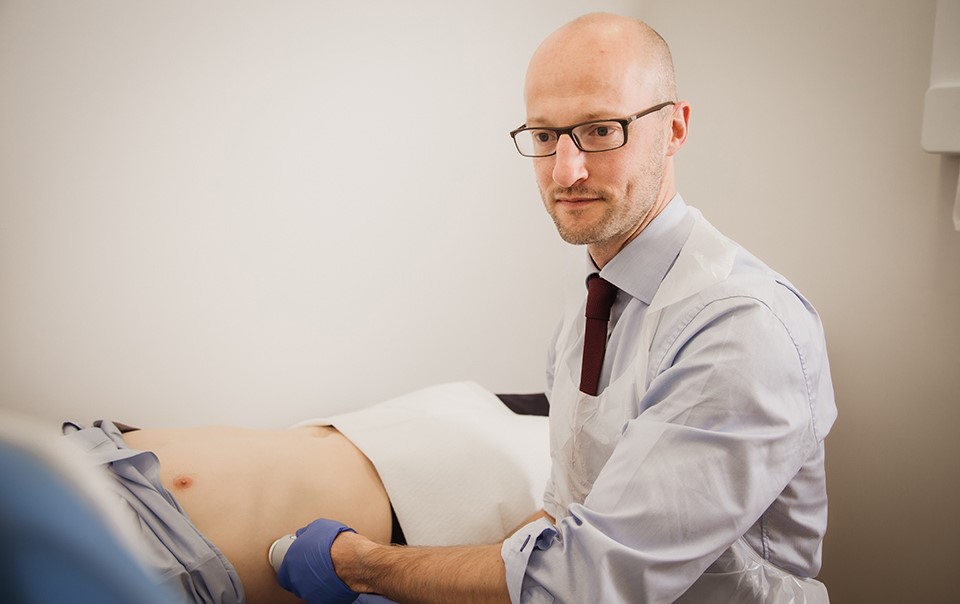 Fibroscan®
Fibroscan®
What is a Fibroscan®?
FibroScan® is the trade name for a device using the technique of transient elastography to measure liver stiffness, which can help to assess the amount of fibrosis or scarring present in the liver. It is quick, non-invasive and completely painless, providing an immediate result to be interpreted by a liver specialist. Dr Cobbold is an expert in the use and interpretation of FibroScan® having used it in clinical research settings and clinical care since 2005.

How does FibroScan® work?
FibroScan® uses ultrasound to measure the velocity of a vibration (shear wave) passing through the liver: the faster the wave passes through the liver, the stiffer the liver, and the liver stiffness correlates with the degree of liver fibrosis.
Who should have a FibroScan® and why?
The following categories of patients may benefit from a FibroScan®:
- People who have risk factors for liver disease, such as a history of heavy alcohol intake or presence of diabetes and/ or overweight/obesity
- People who have evidence of a liver condition where there is a need to work out the severity, e.g.
- Non-alcoholic fatty liver disease
- Alcohol-related liver disease
- Abnormal liver tests of unknown cause
- Autoimmune liver disease and biliary conditions such as PBC and PSC
- Haemochromatosis
- Monitoring the liver in patients taking medication that can cause liver damage (e.g. methotrexate)
What can I expect when I attend for a FibroScan®?
Dr Cobbold performs FibroScan® at the Manor Hospital and at the John Radcliffe Hospital. You should not eat anything for at least 4 hours before the scan, but you can drink water or black tea/coffee. You should wear a loose shirt/top as you will need to expose the ribs on the right side of the chest. Dr Cobbold will place the probe against the skin overlying the ribs with a little ultrasound gel to improve the contact. The probe is pressed gently against the skin and the vibration or shear wave is felt as a “flick” or a “pulse”. Adjustments are made to find the best position, then at least 10 adequate readings are acquired from which an average is taken. And that’s it!
Afterwards, Dr Cobbold will explain the results and how they relate to your particular case.
What do the numbers mean?
The read out from the machine includes a number of figures including:
- median liver stiffness, an average of the readings expressed in kiloPascals (kPa). This is the quoted liver stiffness measurement and the most important output
- IQR (interquartile range) quoted as an absolute number or as a percentage of the median. This number should be less than 1/3 or 30% of the median for a valid, high quality reading
- CAP (controlled attenuation parameter), expressed in decibels/metre (dB/m). This is not available on all machines, but is a measure of how much signal is absorbed by the liver and correlates to a degree with the amount of fat in the liver
How is the liver stiffness interpreted?
There are a number of factors that affect liver stiffness in addition to the presence of scarring, including liver inflammation, blood flow, liver fat and patient’s build. Furthermore, the range of values for severity vary between different liver diseases. This means that the readings should not be interpreted in isolation and should be looked at in the context of all the other clinical information. As a rule of thumb, however:
- <7kPa – normal
- >8kPa – suggests some liver damage
- >10kPa – suggests possibility of advanced fibrosis
- >12kPa – advanced fibrosis, possible early cirrhosis
- >15kPa – suggests cirrhosis
